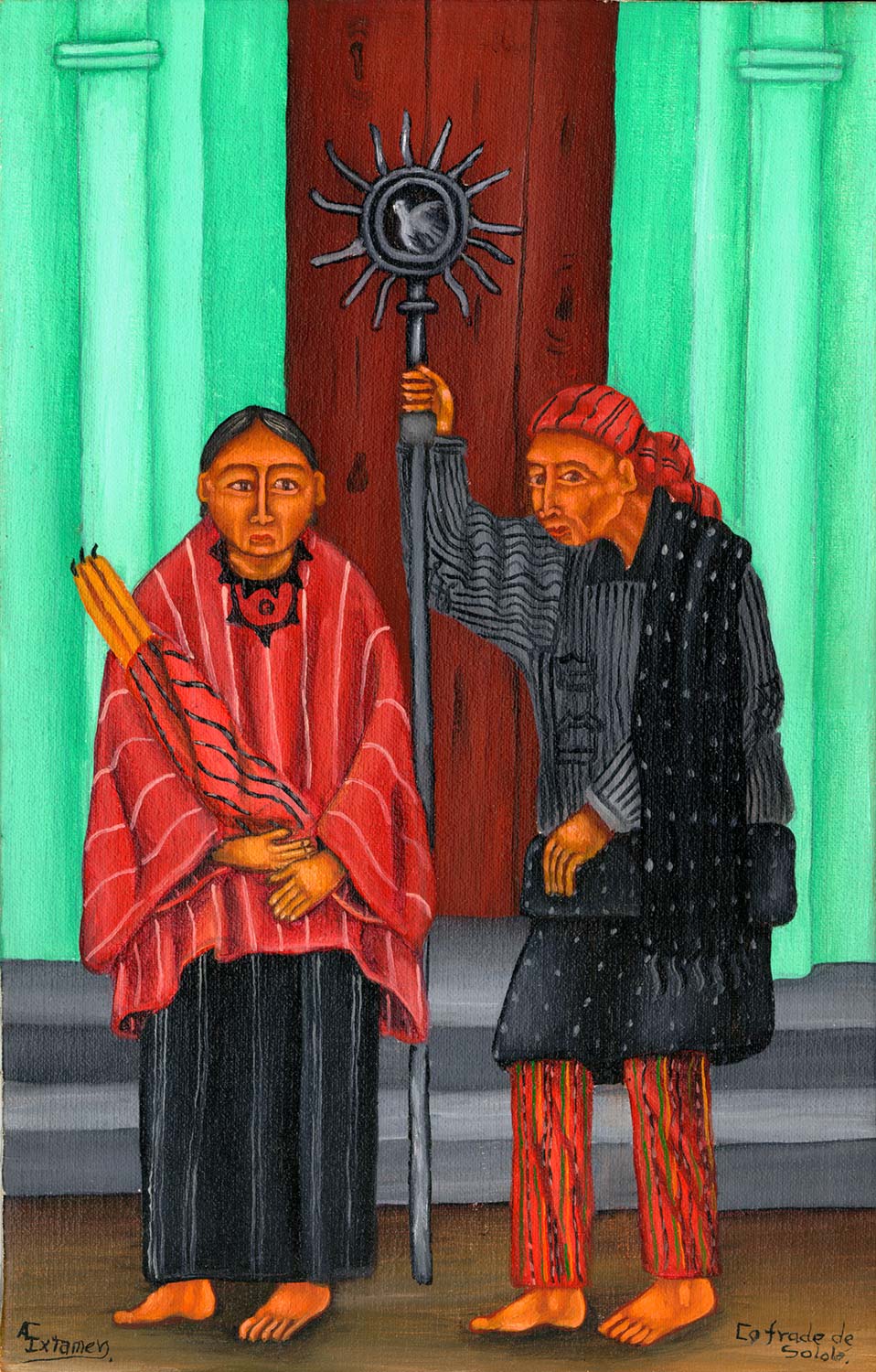In Guatemalan towns, cofradías are religious fraternal orders that the Catholic Church instituted after the Spanish Invasion. Members of a cofradía are lay people organized around the duties and activities involved in the veneration of individual Catholic saints. Historically, the cofradías included both women and men and all classes of Spanish society, although individual cofradías were segregated according to the Spanish caste system.
An interesting example of cultural hybridization is the development of the cofradías in Guatemala among the Maya. In pre-Hispanic Maya towns, a form of association called chinamit was based on preserving lineage relationships. Each chinamit (or clan) maintained communal buildings, temples, deities, and ceremonies. Cofradías became popular with the Maya, perhaps because they preserved aspects of the chinamits. Individual members of a chinamit had duties and obligations they were expected to perform. In similar fashion, members of the post-Invasion cofradías were expected to volunteer their service for a year. The hybridization of the blending of the chinamit and cofradía forms helped preserve traditional Maya religious beliefs and practices. Different Maya towns often ended up preserving different aspects of their pre-Hispanic traditions.
In this painting, two members of a cofradía in Sololá stand in front of the church. Each person is holding objects that represent their office. The man, known as a cofrade, carries the silver staff while the woman, known as a texel, carries the candles which she and the other women in the cofradía maintain. The unique traje (clothing) of Sololá is carefully depicted. This is not the ordinary daily traje of Sololá, but ceremonial traje that also denotes their position as part of the cofradía. The huipil (blouse) of the texel is longer than the daily huipil and it is worn outside of her corte (skirt), over the daily huipil. The man wears a tzute (scarf) on his head and a serape on his shoulder, both of which indicate that he is a cofrade.
For more information: The Tzutujil Mayas: Continuity and Change, 1250-1630, Sandra Orellana, University of Oklahoma Press, 1984.


